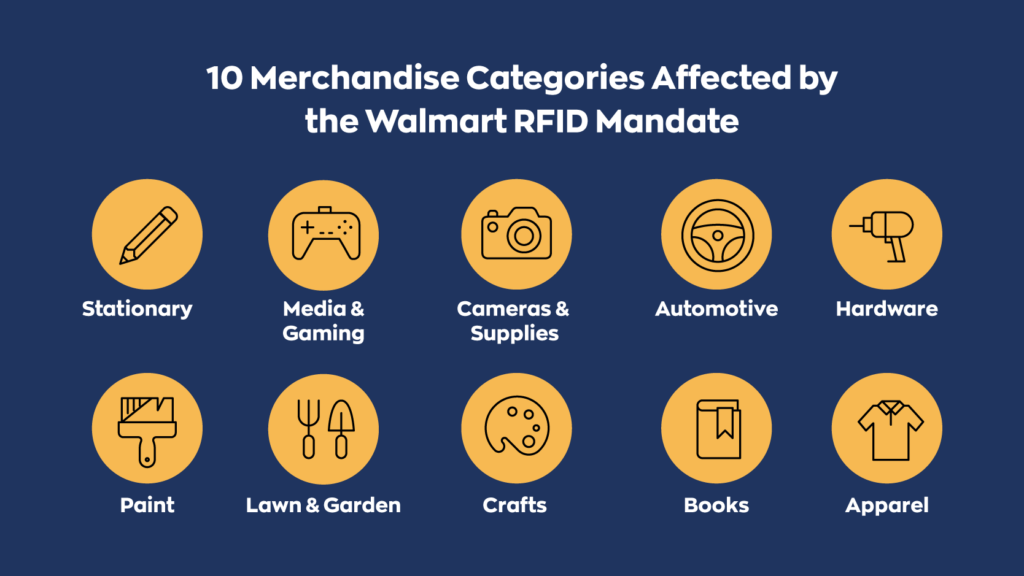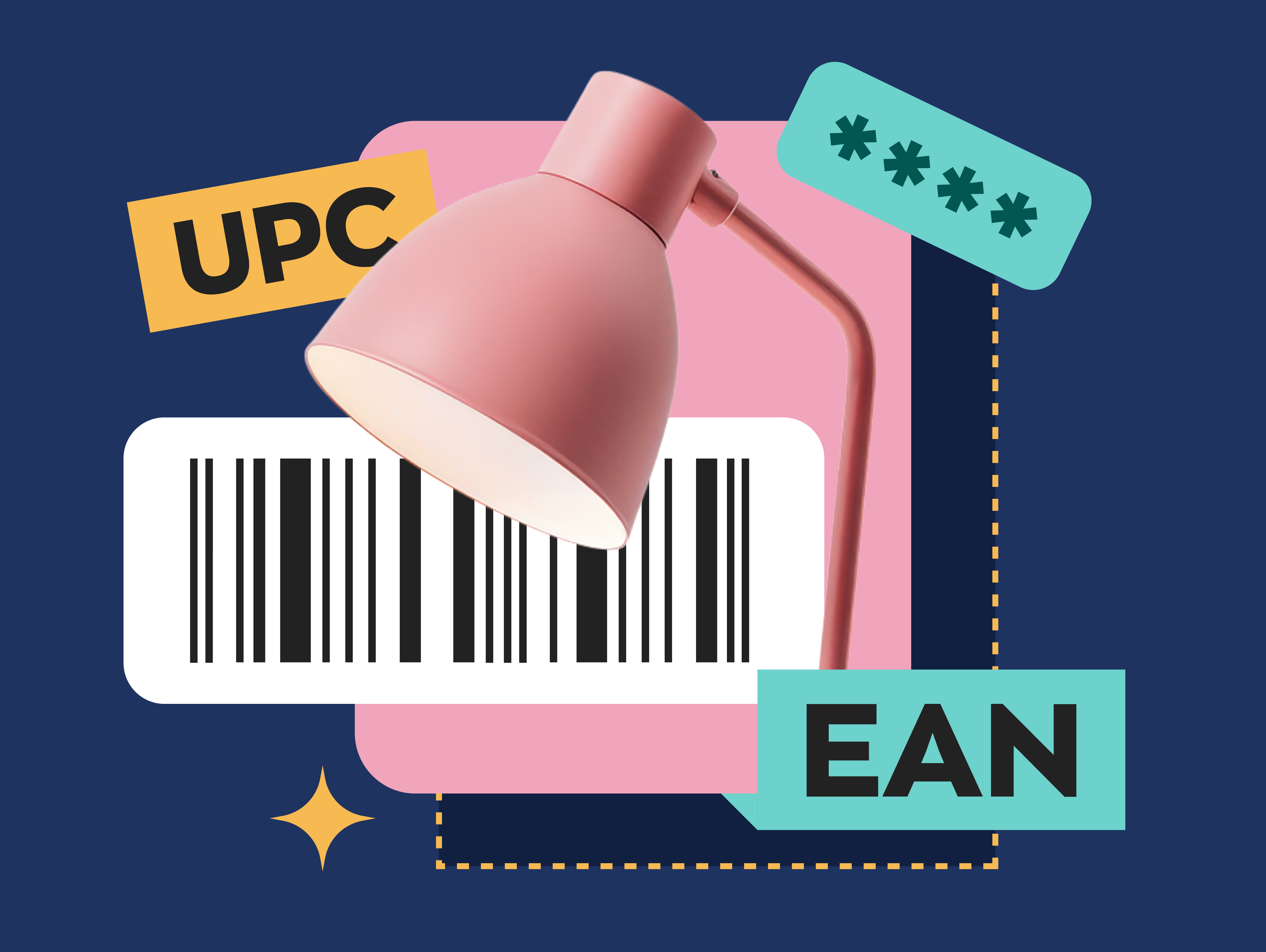Key Takeaways
- The Walmart RFID Mandate began requiring suppliers to tag certain products with RFIDs in 2022, expanding these requirements in September 2023, with full compliance needed by February 2024.
- RFID Technology uses radio waves to track inventory, offering advantages like scanning multiple items simultaneously and reducing labor costs.
- While RFID adoption is growing, especially in logistics and online shopping, barcodes remain relevant due to their lower cost and simplicity.
- Although RFIDs are generally secure, there are some concerns about potential unauthorized access, particularly in sensitive areas like payment systems.
In 2022, retail juggernaut Walmart began requiring suppliers to tag certain product categories with RFIDs. And by September 2023, a mere two months from now, Walmart intends to expand these requirements. While suppliers have until February 2024 to comply with these new mandates, some suppliers are panicking. So: what does the Walmart RFID mandate mean for suppliers? What is an RFID in the first place? How do they fit into the inventory management space? And what does the new Walmart RFID policy mean for the future as a whole? You can find the answers to all these questions in our article below.
If you’re interested in learning more about retail inventory management, watch our podcast below. We talk about barcodes, RFIDs, different types of retail inventory, and plenty more!
What are RFIDs?
RFID stands for radio-frequency identification. An RFID system has three main components: an antenna, a transceiver, and a transponder. The antenna and transceiver work together to transmit radio waves. When the transponder receives the signal, it sends information back to the transceiver. The transceiver then decodes the raw data.
While we won’t go too in-depth here, it’s important to note that there’s two types of RFID tags: active and passive. Active RFID tags require their own power source, while passive RFID tags receive power from the antenna. There are also sub-categories of RFIDs, such as NFC.

Where do RFID tags fit into inventory systems?
For the most part, RFID systems serve a similar purpose to barcode systems. Along with a unique serial number, RFID tags contain information about the product. That said, there’s two major advantages that RFID has over traditional barcodes.
Because RFIDs use radio waves, there’s no need for a direct line of sight. This has a few significant ramifications. On top of being able to scan from anywhere, as long as the signal is strong enough, you can also read multiple tags simultaneously.
Workers can scan exponentially more tags in a fraction of the time, greatly reducing manpower requirements. This directly leads to the second benefit: lower labor costs. Implementing RFIDs can be an expensive endeavor, but it will pay itself off by reducing labor costs.
There are also other benefits that don’t come up too often. For example, RFID is what enables contactless pay, which was touted as a helpful anti-COVID measure. Some retailers, such as Uniqlo, have implemented contactless checkouts for good.
RFID tags aren’t strictly superior to barcoding systems, however. As with almost any business system, there are some trade-offs.
RFID brings new concerns
While there’s many reasons to use barcodes over RFID, they tend to fit into one of two reasons.
First, implementing an RFID system can be expensive. On top of the necessary equipment, there’s other costs to consider as well. For example, many RFID systems require power over Ethernet (POE) in order to function. Larger businesses are able to front the implementation costs, but smaller ones might not be so lucky.
RFID systems also bring security concerns with them. It’s why we’re starting to see RFID-blocking wallets and other accessories, even if their efficacy is debatable. Just to be clear here, RFID systems are relatively safe. On top of being naturally secure, they also receive regular security updates.

But these fears don’t come from nowhere. No matter how strong the security features are, there is an underlying truth. Anyone with a scanner can theoretically read any RFID tag. At the same time, though, this completely ignores the many security measures already in place. And for the inventory management field specifically, there’s not much reason for someone to hack an RFID system anyway. These concerns are more relevant for RFID-enabled credit cards and sensitive documents like passports.
Why is the Walmart RFID mandate happening?
Officially, the Walmart RFID mandate policy is in place to improve customer satisfaction. This is undoubtedly part of the reason, but it doesn’t paint the whole picture either.
Even compared to other retail juggernauts, Walmart buys, sells, and moves ludicrous amounts of products. The increased efficiency of RFIDs saves them exponentially more time and money than most other stores. In Walmart’s case, it’ll also help on the logistics side of things. RFIDs are becoming widespread in the shipping and logistics industries, something that Walmart has a vested interest in maintaining.
Because of the scale that they operate on, the long-term cost-saving measures of RFID systems save a lot more. And because of Walmart’s status as a retail titan, they’re more than happy to eat the initial implementation costs.
What does the Walmart RFID mandate mean for suppliers?
Realistically speaking, the Walmart RFID mandate policy introduces another hoop for suppliers to jump through. It introduces additional costs, but these costs pale compared to the profit that comes from having your product on Walmart’s shelves. It may end up pushing away smaller suppliers, but at the end of the day, it’s well worth adhering to the Walmart RFID mandate to stay on their shelves.
There are a few ways it’ll make things easier for suppliers, as well. Using RFID systems naturally creates more robust supply lines. RFIDs can also help locate missing or stolen stock depending on the strength of the tags used.

In conclusion, the new Walmart RFID policies may prove a hassle to some, but it’s well worth the price. On top of selling power, the sheer amount of traffic that goes through Walmart can help increase the number of eyes on products.
What does it mean for the future?
Realistically speaking, there’s a good chance that RFID tags replace barcodes sometime in the future. This is especially true considering the growing popularity of online shopping. Using RFIDs in these scenarios is more efficient, as you’ll usually be shipping straight from a warehouse.
This doesn’t mean that barcodes are obsolete, however. Even though RFIDs have seen a price drop in recent years, they’re still prohibitively expensive for some. Brick-and-mortar stores are seeing an increase in the popularity of RFIDs, and the chances of them being phased out are slim.
There’s also security concerns to consider. Even if RFIDs are relatively secure, there are some industries where it’s simply not worth the risk. RFID may be the future, but for the time being, barcodes are also here to stay.
If you need official GS1 registered barcodes you can purchase them from our inFlow GTIN Barcode Shop for only $30 each, with no renewal fee.






Your blog post about RFID technology really stands out!
Hey Shivam,
We’re glad you liked it!
Cheers,
Jared
This is really helpful for those who are interested in RFID and how it can streamline operations in the manufacturing sector.
Fantastic post! Your analysis of the mandate of RFID in walmart is astonishing.
Hey poxo,
We’re glad you liked the post!
Cheers,
Jared
I work at a Walmart Auto Care Center. We have RFID on tires and batteries. Problem is, my inventory since implementing RFID has never been accurate. We scan RFID twice per week. Before RFID we would conduct a tire audit once per month and my counts were nevrer off by more the tow or three tires out of about 1,000 on hand. With RFID I am always off by at least 30% of any given tire size. Whenever giving a tire quote I always have to visually check to make sure I have the tires the system says I have.
Newer is not always better
Hey Mike,
Thanks for sharing that anecdote. It’s interesting to hear how this transition is going from someone who actually is working with RFIDs on a daily basis.
Cheers,
Jared